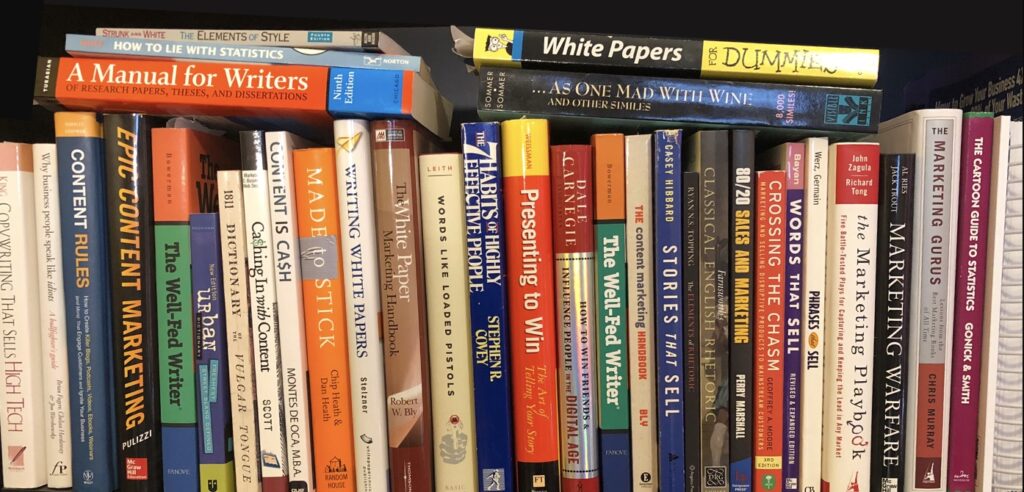
Recommended books on white papers (and everything else)
Here are the books I highly recommend for any B2B writer or marketer.
My favorite books have given me so much:
- A quick reference as I worked
- Wise guidance on thorny issues of style or form
- A shot of inspiration when I needed it most
I keep all these titles within easy reach on my bookshelves. And I often reach for them!
Now you can peruse my “virtual bookshelf” to see all my favorites.
Where I have a longer review of a book, I put in a link to it.
You can click any cover to see more or buy it from Amazon.
Yes, I get a few pennies from Amazon from these links. I use those pennies to buy prizes for my monthly book giveaway!
Happy reading… and happy writing too!
Jump to books on these topics…
- B2B Marketing
- Content Marketing
- Creative Ideas
- Personal Effectiveness
- Plain Language
- Rhetoric
- Slide Decks
- Statistics
- Style Guides
- White Papers
- Writing in General
- Writing as a Business
Plus my own book, White Papers For Dummies
B2B Marketing
Breakthrough ideas in reaching B2B prospects
80-20 Sales & Marketing by Perry Marshall
You’ve heard of the Pareto Principal aka the 80-20 rule, right? In essence, it says that the majority of results flow from a small minority of effort.
But did you know the 80-20 rule can be applied to any marketing campaign? Or any house list?
And the 80-20 rule is fractal, so it keeps repeating ad infinitum.
That means your best prospects are the 20% of the 20%… the 4% of all prospects who will happily pay top dollar.
Prepare to be amazed and inspired by this book. I have rarely been so excited by any business book as when I read this one.
Some entrepreneurs apply these insights to every corner of their business and have amazing results to show for it.
The Art Of War by Sun Tzu
You’ve heard of this one. But have you ever seen it?
This book was compiled more than 2,000 years ago. And it’s still studied today, especially in Asia and by executives in tech startups.
Before I read it, I thought it was all about how to defeat any opponent with brute force. But I was surprised to find it remarkably subtle.
“The Art of War applies to competition and conflict in general, on every level from the interpersonal to the international,” says the Preface. And the ultimate aim of its advice, surprisingly, is “victory without battle.” (page viii)
Here’s a small taste:
‘If you outnumber the opponent 10 to one, then surround them; five to one, attack; two to one, divide. If you are equal, then fight if you are able. If you are fewer, then keep away if you are able.” (page 20)
The trick, of course, is to interpret that in a modern business setting. Do those numbers refer to your marketing budget? Your partners or resellers? Your social media followers?
Like all “wisdom literature,” The Art of War is rich and thought-provoking. And this little Shambala edition is my favorite, because it’s small enough to carry around in a pocket or purse, but still quite readable.
Crossing the Chasm by Geoffrey A. Moore
The seminal work on how to avoid getting stuck in the vast chasm between early adopters and Main Street, as so many tech companies have.
One startup where I worked used this as our roadmap.
We quickly sold $20 million of B2B software and were acquired by our biggest competitor who was tired of us eating their lunch. What more can I say?
Moore has lots of advice on targeting a niche, appealing to early adopters, building a complete solution, and dominating your niche.
Only then should you expand to nearby niches.
At each stage, you likely need to reconsider your marketing to appeal to prospects with different goals.
For example, early adopters are willing to take a risk and help you finish a half-completed system, all for the chance to gain a massive advantage.
But mainstream prospects are different.
They want a complete solution, tested and approved by everyone else, involving little risk. Think government buyers.
Would you publish the same content for both audiences? Of course not.
So this book gives you a useful mental map of how “disruptive innovation”—aka true breaks with the past—actually happens in the real world.
Hint: Not everyone wants their industry to be “disrupted.” Many business people want their industry to stay more or less than same, with some incremental improvements that don’t shake things up in a radical way.
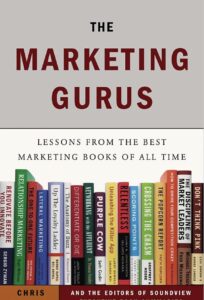
The Marketing Gurus by Chris Murray
Quick summaries of 17 classic marketing books from Soundview Executive Summaries, including:
• Crossing the Chasm by Geoffrey Moore
• How to Drive Your Competition Crazy
by Guy Kawasaki
• Purple Cow by Seth Godin
• Relationship Marketing by Regis McKenna
Some of these are from the 1990s. If you don’t agree with them, that’s fine.
But you should at least know the thinking that went before… and some of the timeless insights these titles contain.
And if someone older mentions Moore, Kawasaki, Godin, or McKenna, you will have a clue who they’re talking about.
The Marketing Playbook by John Zagula and Richard Tong
These two worked at Microsoft back in the day and then become venture capitalists. As you can imagine, they have some sharp suggestions on going to market.
Like all my recommended titles, this advice doesn’t rely on the latest social media platform or Google update. It’s evergreen.
The book explains five clear marketing strategies:
- The Best of Both (aka hybrid)
- The Drag Race
- The High-Low
- The Platform
- The Stealth Play
This book shows how each play works, how to pick the best one for any given situation, and how to implement it effectively in the real world.
I can attest that I’ve used the Best of Both in several white papers, and it worked like dynamite. Without this book, I could never have run that play.
If you’re a marketer who plans campaigns, or a writer who recommends content strategy to your client, this book is a must.
Marketing Warfare by Al Ries and Jack Trout
An absolute classic that taught me the four types of marketing campaigns:
• Offensive
• Defensive
• Guerilla
• Flanking
You can use white papers for any type of campaign.
In most market spaces, one firm is clearly the dominant player, the king of the hill with their own castle.
You could attack them directly. But fighting your way up a mountain against a fortified castle is an offensive campaign. That’s hard and costly, with no guarantee of success.
For many smaller B2B companies with big competitors, it’s easier to do a flanking campaign. That’s where you turn your back on the incumbent, find a nearby mountain, and declare yourself king of that hill.
This works really well in tech, where you can create a new category with a cool acronym and entice customers to your mountain.
Now, if anybody else wants to fight, they have to claw their way up your mountain. And you get to wage a defensive campaign, probably the easiest.
I recommend this 20th-anniversary edition. It’s fun and easy to read. Most of the anecdotes (aka war stories) draw on B2C, but the concepts apply equally to B2B.
Content Marketing
Theory and practice, including tips on writing different formats
The Content Marketing Handbook by Bob Bly
An excellent book that deftly sums up the best practices for a host of different types of B2B content.
This includes a whole chapter of solid advice on writing white papers.
If you do content marketing, either as a marketer or a writer, this book is worth getting.
Content Rules by Ann Handley & C.C. Chapman
This book appeared in 2011, but too many marketers carry on as though they’ve never seen it.
Some ultra-sensible “rules” for content from part 1:
• Embrace being a publisher
• Speak human
• Share or solve; don’t shill
• Show, don’t just tell
• Do something unexpected
No Google update since 2011 has ever run against this advice.
Write useful information, sound like a human in a conversation with another person, and cover something few others have, and Google will reward you.
Part 2 covers the specifics of different formats, from blogs to videos.
Of course, there’s a chapter on e-books/white papers. I can’t quite agree with the distinction between the two:
- A white paper is like a man in a gray flannel suit who talks down to you
- An e-book is like a helpful colleague in the bar in a Hawaiian shirt
But I agree with the rest of that chapter, which covers the kind of thoughtful advice I’ve dispensed through this website since 2005.
Part 3 provides some case studies of companies using content wisely.
If you think this would help some manager in your company who still doesn’t “grok” content, by all means, get them a copy of this book.
Epic Content Marketing by Joe Pulizzi
The author is the founder of the Content Marketing Institute, who probably did more to put content marketing on the map than anyone else.
This book contains a lot of timeless wisdom.
If you’ve been marketing with content for years, you’re happy with the results, and your management is all on board, you probably don’t need this book.
But if you’re still getting started, unhappy with your results, or fighting upper management for resources, this book will fill in the theory and insights you just may need to achieve better results.
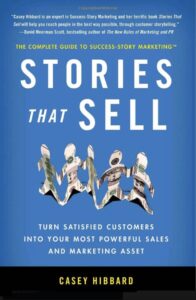
Stories That Sell by Casey Hibbard
This is the only book I know that’s all about case studies, and it’s excellent.
Casey Hibbard has written more than 1,000 of these pieces, so she knows what she’s talking about. And she shares her knowledge on everything from process to content to publishing.
If you want to write B2B case studies, get this book.
Getting Creative ideas
How to come up with effective ideas, by yourself or in a team
A Technique for Producing Ideas by James Webb Young
Any type of writing or marketing demands fresh and effective ideas. So does any business.
And here’s the original source that describes a repeatable process for getting creative ideas.
Written in the 1940s by an “advertising man,” this 48-page book is a timeless classic.
The author defines an idea as, “a new combination of specific knowledge about products and people with general knowledge about life and events.” (pages 24-25)
And here’s the bare bones of his five-step process for generating ideas:
- Research the product and the audience
- Bring in your life experience and natural curiosity
- Shift your attention to something else
- Watch an idea appear
- Refine the idea with input from others
Of course, there’s a little more to it than this, and the book adds more to the discussion. But I’ve used this approach for years, and it works!
Don’t let the small size of this book fool you. For $10, it conveys insights that can earn you millions of dollars over your career as a content or copywriter.
I recommend the 2003 edition from McGraw-Hill with the cover shown here.
<rant>The later editions on Amazon look like ripoffs from unauthorized sources. I can’t believe Amazon allows such dreck to be sold on their site.</rant>
Creativity, Inc. by Ed Catmull
If you manage a team that lives or dies by your creative ideas, this book is for you.
It’s all about how to create a corporate culture that truly values creative expression.
Who would know anything about that? How about the co-founder and long-time president of Pixar who worked closely with Steve Jobs?
As a computer science student, Ed Catmull was driven by the goal of making a feature film entirely with computer animation.
While still a youngster, he invented texture mapping, worked with George Lucas, and met all the movers and shakers of Silicon Valley and Hollywood.
Along the way, he noticed something: Successful companies sometimes do really stupid things, or ignore a problem that eventually destroys them.
“Why does this happen?” he asked, and “How can we avoid that?”
The answers make this a bracingly honest memoir where the author isn’t afraid to admit his mistakes.
The book is well-structured and well-told with the help of seasoned journalist Amy Wallace.
Whether you’re interested in creativity for teams, a thoughtful business memoir, or the inside history of Pixar, this is a book you can savor.
Made to Stick: Why Some Ideas Survive and Others Die by Chip Heath and Dan Heath
Why did the idea that weirdoes were poisoning Halloween candy take hold—without a shred of evidence that it ever happened?
That’s the intriguing question explored in this book by the brothers Heath. They tabulate the six key requirements of a sticky idea, with many well-researched anecdotes and insights.
Here’s the list of what makes an idea sticky:
- Simple
- Unexpected
- Concrete
- Credible
- Emotional
- Good story
Entertaining and thought-provoking throughout, this book will help any writer or marketing person struggling to come up with a Big Idea that gains traction.
I routinely run my tentative Big Ideas for white papers through their six-part list to see how they shape up. Highly recommended.
Ogilvy on Advertising by David Ogilvy
A seminal book that’s hard to categorize. A great read full of war stories from some of the greatest ad campaigns of the 20th century. Undoubtedly an inspiration for the MadMan series.
No, he doesn’t mention SEO or the latest Google update. That’s kind of the point. He covers the timeless process of coming up with ideas that sell.
Personal Effectiveness
Classic advice on how to live a positive and effective life
The 7 Habits of Highly Effective People by Stephen Covey
Called the #1 most influential business book of the 20th century, this is a must-read.
When someone says, “Begin with the end in mind” or “Sharpen the saw” they’re quoting Covey.
Even “think win/win” is one of these habits.
All in all, this is timeless, sensible, practical, inspirational advice and insights that apply to anyone, anywhere, anytime.
Borrow it from the library if you have to, but by all means, read this book.
Here’s why this book is perfect for white paper writers.
And why it’s great for white paper marketers, too.
How to Win Friends & Influence People in the Digital Age by Dale Carnegie
The original, the one and only… now updated for the age of social media without losing any of the original wisdom.
Learn these principles, and practice them. Break this advice at your own peril.
Plain Language
Tips and arguments for writing clear and accessible documents
The Plain English Handbook from the SEC
If you’re a finance writer, stop whatever you’re doing and download this free, 83-page handbook.
It’s a masterful textbook on how to prepare clear information for investors.
The scope is impressive, with succinct chapters full of useful tips on writing, designing, and reviewing financial documents.
Two appendixes sum up the rules of plain English and provide intriguing Before and After examples of SEC documents that were edited and why.
Even if you’re not a finance writer, this handbook is a remarkable resource. And the price is right.
So get it today, and study it. Your clients will thank you for it.
Writing for Dollars, Writing to Please by Joseph Kimble
The subtitle for this book explains it well: “The case for plain language in business, government, and law.”
There’s no other book quite like this.
It’s part memoir, part manifesto, part rules for writing, and part compendium of groups and resources devoted to plain language from countries around the world.
A final topper makes this book truly amazing: No less than 50 case studies on the time, money, and headaches that government agencies, law firms, and companies have saved using plain language.
The five-page section on “The Elements of Plain Language” provides solid tips for any business writer. Among the sensible prescriptions:
- Resist the urge to sound formal
- Boil down information to what your readers really need
- Use examples
- Test documents on a group of typical users
- Use between 45 and 70 characters a line
This list goes on and on, and there’s not a single piece of advice that I have any quibbles with. (That’s rare!)
Readability vs plain language
One interesting distinction that I learned from this book is the difference between “readability” and “plain language.”
Readability measures how much effort it takes to decipher a piece of text. But a document can be highly readable without being useful.
“In applying the readability formulas, it’s important to remember all the things they don’t do. They don’t measure purpose, emphasis, organization, coherence, rhetoric, tone, design, or the other factors of effective writing.” (page 50)
Plain language accounts for the purpose, the audience, and all the other factors listed above. That makes plain language even more powerful than mere readability. Interesting.
Rhetoric
Guidance and examples of how to build a persuasive argument
Classical English Rhetoric by Ward Farnsworth
A wonderful way to explore rhetoric through more than 1,000 examples drawn from great writers and leaders of the past, from Shakespeare to Churchill.
All examples are arranged under 18 common rhetorical devices.
A pleasure to dive into and savor the type of bon mots we seldom hear from leaders today.
The Elements of Rhetoric by Ryan N.S. Topping
A neat little book modeled after The Elements of Style, with 26 rules, many examples, and tables that sum up the key insights of rhetoric through the ages.
At only 105 pages, I read it in two sittings, highlighting something on almost every page.
A great reference to add to any writer’s desk. Includes a 10-page study guide.
Words Like Loaded Pistols: Rhetoric from Aristotle to Obama by Sam Leith
My appreciation for rhetoric really started when I heard this lively author on the radio.
His book provides an entertaining discussion of rhetoric with far more contemporary examples than Farnsworth.
If you never studied rhetoric, this is a good book to start with.
Even if you did study rhetoric years ago, this book’s modern and lively approach may help you approach the topic with a lighter heart.
Includes a glossary, figures listed by theme, notes, and index. All the better to find the exact rhetorical device you’re looking for.
The paperback edition published in 2023 includes a new Introduction and Afterword that grapple with rhetoric in the age of social media, post-truth, and the war in the Ukraine.
The author’s conclusion: Rhetoric will always be with us.
Slide Decks
Practical tips and advice on using PowerPoint
Beyond Bullet Points by Cliff Atkinson
Brilliant advice on how to create slide decks that actually keep people awake and listening.
The author is renowned for his approach, which he has taught to organizations from the American Bar Association to Toyota.
I especially appreciate his advice on assembling a slide deck as a 3-act story.
That takes time, but it really works!
Want proof? Atkinson helped craft the presentation that persuaded a jury to award $253 million in the first trial of Vioxx in 2005.
The book is packed with level-headed, sensible, astounding advice on how to merge minimalist text, consistent graphics, and effective story-telling into something far greater than the sum of its parts.
And there are some great forms and templates available to back up the text.
If you make slides as part of your job or as a deliverable to your clients, don’t think twice. Get this book now.
Your slides will never be the same.
Presenting to Win by Jerry Weissman
Doing a slide deck? You get 4 bullets per slide and 4 words per bullet. That’s it, that’s all.
From a former TV producer turned PowerPoint drill-master to the stars of Silicon Valley roadshows.
Follow Weissman’s advice, and your audiences will never suffer from the terrible fate of MEGO (My Eyes Glaze Over).
If I could only pick one book on Powerpoint, I would probably pick this one, simply because it’s quicker to implement than Atkinson’s.
Weissman talks about moving your audience from point A to point B, designing effective slides, and using a minimalist approach.
Even doing that much would dramatically improve most slide decks.
Statistics
Entertaining introductions to statistics, which all writers should understand
The Cartoon Guide To Statistics by Larry Gonick & Woollcott Smith
As marketing becomes more data-driven, content writers need to know more about statistics.
Heck, we need that just to avoid drowning in the tidal wave of shoddy statistics all around us.
I love Gonick’s approach, which uses a whimsical or even silly illustration for every concept in the field.
This book is a lot of fun to look at, even for “artsies” like me who never studied the subject in school!
If you want to understand statistics but any standard textbook puts you to sleep, give the cartoon approach a try.
How to Lie with Statistics by Darrell Huff
A great little book that all marketers should read.
First published in 1954, the graphics and language are charmingly old-fashioned. But the intent is as sharp and necessary as today’s latest Tweet.
“The secret language of statistics, so appealing in a fact-minded culture, is employed to sensationalize, inflate, confuse, and oversimplify,” warns Huff.
As the blurb says, this book is “a wake-up call for people unaccustomed to examining the endless flow of numbers pouring from Wall Street, Madison Avenue, and everywhere else someone has an axe to grind, a point to prove, or a product to sell.”
Writers and marketers can benefit from taking more care with the statistics we use. So can journalists, bloggers, and influencers.
Style Guides
Guidance on preparing documents that engage readers
A Manual for Writers of Research Papers, Theses and Dissertations by Kate L. Turabian
I’ve always said white papers are a lot like essays. In fact, I call them “persuasive essays.”
But most of us have forgotten everything we ever learned about writing essays in college.
So why not go back to the best source on how to plan, research, organize, write, and footnote an essay?
Why not use a source that already helped generations of students do their college papers?
This title has helpful and concise sections on outlining, researching, organizing sources, building an argument, using tables and figures, and even overcoming writer’s block.
And of course, it’s my go-to source for how to format footnotes or endnotes, the hallmarks of a well-researched white paper.
This book can help any white paper writer complete a long-form writing project. In short, it belongs on the desk of every white paper writer.
Associated Press Stylebook by AP
This style guide is used by most American newspapers and I follow it most for white papers.
This gives you a clear set of rules, arranged in alphabetical order for easy access.
As they say, you have to know what the rules are before you can break them. If your company or your client has no style guide, suggest this one.
And this stylebook is updated often to keep up with changing terms.
There are only a few things I don’t like about the AP style.
One is the long-winded abbreviations for American state names. Why write, “Los Angeles, Calif.” when you can write, “Los Angeles, CA” using the two-letter post office system?
But that’s a nit, and 99.5% of the time, I agree with AP Style.
The Elements of Style by William Strunk Jr & E. B. White
Every writer should have a copy of this beside their keyboard, and turn to it often.
For a few dollars, this title gives you a brief but definitive guide to good, clear writing.
Every student, journalist, marketer, and certainly every content writer can benefit from its advice.
Read my love letter to this little book here.
There’s even a light-hearted illustrated version now, with charming paintings throughout.
Unexpected though it is, the colorful illustrations by Maira Kalman are remarkably well-suited to the text.
I often find myself wanting to step into those scenes.
So, you choose… do you prefer a more practical handbook or a more decorative and whimsical edition?
The Elements of Technical Writing by Gary Blake and Bob Bly
If you write white papers about technical subjects, no matter how much experience you have, you can benefit from this book.
I did technical writing on and off for 20 years, producing dozens of thick manuals about hardware and software.
I could have used this book during that time. It covers most of the struggles people have when writing about technical subjects.
The chapter on how to write numbers alone is worth the price of admission.
As Bly notes, there are many ways to write any number, and writers should pick the best form.
That chapter lays out logical guidelines for expressing numbers, units of measure, equations, and symbols in text. These sensible rules of thumb will help any writer pick the best way to convey these tricky items.
The book goes on to spell out advice on punctuation, grammar, abbreviations, and caps. I can’t argue with a single item I found here.
There are thicker manuals of style in my list, assembled by committees and published decades after this.
But when I want to check how to handle some editorial issue, I pick Bob’s book off my shelf first. And I follow his advice.
The IBM Style Guide by IBM Press
If you write about software or hardware, you will appreciate this book.
Assembled and updated over 20+ years by the IBM Style and Word Usage Council, this book is a very technical and authoritative reference for anyone who writes about tech.
It has all the expected sections on language, grammar, punctuation, formatting, and numbers.
And there are a few surprise sections on indexes, glossaries, and writing for diverse audiences.
I enjoy flipping through books like this to see how wise people before me suggest handling different issues in writing and publishing.
Letting Go of the Words by Janice Redish
Aimed at web writers, the advice here applies to any B2B content.
Here’s some of the choice guidance:
Know your audience, keep it simple, use good titles and clear headings, and break it up into bite-sized pieces.
Who can possibly argue with any of that?
Written by a world-renowned expert on information design with decades of experience, this book proposes something I’ve really taken to heart.
Web visitors don’t read websites the way they read a mystery by their favorite author: paying close attention to every phrase and every clue.
Web visitors skim, scan, and skip. They’re in a hurry. They want to grab and go.
This confounds anyone who writes for the screen the same way they write for the page, with long paragraphs and dense explanations.
But that just doesn’t work on the Web.
With this book, you’ll have everything you need to switch gears, let go of the words, and write web content that really works. Highly recommended.
If you’re searching for the right name to call something you see on a screen, it’s probably in here.
Along with many other tips that apply to any sort of technical content.
The front part provides useful reminders about voice, precision, anthropomorphism, bias, and writing for a worldwide audience.
Then there are the expected chapters on punctuation and grammar.
The final part of the book is my favorite: 185 pages of terms and usage, arranged alphabetically for quick reference.
If you write about tech, you should get this style guide.
This 512-page sourcebook is packed with useful tips and best practices.
Some of that bulk is because it’s easier on the eyes, with bigger type and more headings than many other style guides.
Here are my thoughts on how this applies to white paper writers.
White Papers
How to write the longest of long-form content pieces
Crafting White Paper 2.0 by Jonathan Kantor
B2B white papers readers are stressed, distracted, and pressured for time. Don’t make their lives worse!
If your white papers still look like something you pumped out of MS Word, it’s time for an upgrade.
This book looks at how white papers can be improved by more thoughtful use of design and content.
The White Paper Marketing Handbook by Bob Bly
This title is about much more than white papers.
This covers the whole beginning of what it calls “edu-marketing” now known as “content marketing.”
Include 10 case studies and a list of resources.
Here’s my review, including Bly’s excellent list of ways to prove the assertions in a white paper.
White Papers for Dummies by Gordon Graham, That White Paper Guy
Have you heard of this one?
It’s packed with 15 years’ worth of tips and advice on how to plan, research, write, and promote a white paper.
And it covers the three ice cream flavors in depth.
I wrote this 10 years ago, and I recently reviewed it. I found the advice is evergreen.
Click here to see more about the book itself.
Or here to see what people say about it.
 Write a White Paper in a Day by Brian Boys
Write a White Paper in a Day by Brian Boys
How is this possible? After all, I say it takes 6 to 8 weeks to do a white paper.
Hint: The one day is for writing only, not researching in advance or polishing your draft after.
Still, this book provides a simple white paper template and enough background to help any hesitant writer get started.
Think of this as your “quickstart guide.” It works!
Writing White Papers by Michael Stelzner
The first-ever book on white papers takes a practical approach with lots of proven techniques.
Although it’s more than 15 years old, it still has lots of good advice and best practices.
You can still get it used from Amazon.
Here’s my review from when this first appeared.
Writing in General
Finding the right words, and mastering the writing process
As One Mad With Wine And Other Similes by Elyse Sommer and Mike Sommer
This is far more than a thesaurus or a web search for synonyms.
This book features more than 8,000 similes, arranged by topic from “abandonment” to “zeal.” When you read it, you’ll be smiling “like a child on their birthday” with your imagination “soaring like a geyser.”
You can’t always get away with writing this colorful in a white paper or any other B2B content.
But this book could help you come up with a Big Idea “as good as a fat wallet.”
And you just might be able to use one zinger you find here in a white paper to insult the competition, describe a product feature, or nail down your conclusion.
On Writing Well by William Zinsser
Could a million readers over nearly 50 years be wrong?
This book is an acknowledged classic that attracted almost universal acclaim since it appeared in 1976.
And unlike many other books on writing, this one focuses squarely on writing non-fiction.
Divided into parts on principles, methods, forms and attitudes, this offers thought-provoking and sometimes challenging advice on how to write engaging text… and that’s exactly what we need to do as B2B content writers.
On Writing by Stephen King
So he’s a novelist and a screenwriter, not a B2B content writer. So what? Who hasn’t read a book by King or seen a movie based on a book by him?
Here are his words of advice and encouragement, with stories from his life woven into the lessons he shares.
Prepare to be entertained by a master—and to pick up some tips you can actually apply in your B2B writing.
Phrases That Sell by Edward Werz
This book packs a double-whammy: both an intro to copywriting and an alphabetical listing of handy phrases.
It starts with the 10 basic rules of copywriting and the seven steps to writing slogans.
Readers are advised to know your audience, understand your product or service, stress the benefits, use the active voice, use short words and short sentences, and tell your readers what to do…
Gee, where have you heard that kind of advice before? (Hint: On this website.)
Then it moves on to 5,000+ useful phrases from “age” to “versatile.” There’s an index of concepts to help you find what you need.
Check out the next book too. I find this title goes hand-in-hand with Words that Sell, only this book gives longer phrases.
Words that Sell by Richard Bayan
A specialized thesaurus of 6,000 words and phrases you can drop into your writing.
You can actually flip through this book and pull out the perfect little gem for a piece of copy or content.
The book is organized around the so-called “grabbers, descriptions, and clinchers” aka openers, qualifiers from “appealing” to “valuable,” and closers.
There’s a section on special strategies, including knocking the competition and justifying a high price.
And a handy appendix lists many phrases that are “puffspeak” or wordy, misspelled, or confused. All in all, it’s a fun, useful reference.
And it goes hand-in-hand with Phrases that Sell. You may not find the perfect word, but flipping through this will certainly start the creative juices flowing.
Writing as a Business
What you need to know to make it as an independent writer
The Everything Guide To Writing Copy by Steve Slaunwhite
A personal friend, Steve has put together an excellent guide to the business of writing copy, filled with solid advice.
I especially liked his chapters on the copywriter’s “bag of tricks” and the one on solving common problems like “my client hates my copy!”
Now, you may say—like I do—that you’re not really a copywriter, because you only write content like white papers.
But I believe knowing how copywriting works can only help us as content writers.
This might be the one book you need that gives you all the basics about “the other side of the street.”
The Wealthy Freelancer by Steve Slaunwhite, Pete Savage, and Ed Gandia
I recommend this book to every freelancer I know.
This book has tons of pragmatic advice on how to launch or pump up a freelance business, told by three seasoned freelancers who joined forces for this title.
Get your buzz piece (aka white paper) ready.
The Well-Fed Writer by Peter Bowerman
My copy has post-its, dog ears, and highlights throughout… the sure sign of a useful read.
Now in its third edition, it just keeps getting better.
I really wish I’d had this book 40 years when I first started freelancing.
That would certainly have saved me years of wasted time and effort and helped me earn more, faster.
So if you’re just started out as an independent writer, or even if you’ve been working for a few years, I highly recommend that you get ahold of this classic and apply some to its wise counsel.
And my own book, White Papers For Dummies
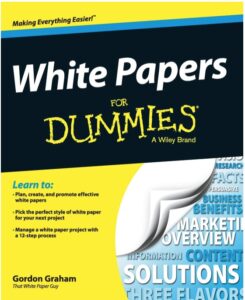
I had the pleasure of writing a book myself. I tried to pack in everything I learned in 15 years of working on these challenging documents.
And I’m delighted that White Papers for Dummies has been so well-received, with more than 60 5-star ratings on Amazon.
It’s available in print and as an e-book. I like having an e-book version, so I can quickly search through the whole text.
And for about $20, most people say it’s a great deal.
Whether you’re a marketing manager seeking to use white papers to promote your company, or a copywriter looking to break into this well-paying field, White Papers for Dummies offers tons of practical advice.
This page was originally published in 2014. Last updated 23 April 2024.
For more useful resources like this, get my free newsletter.

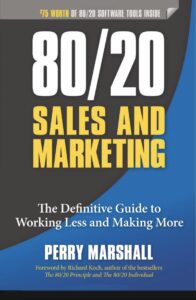
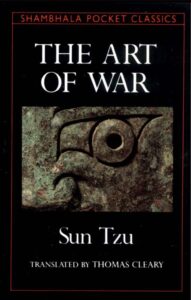
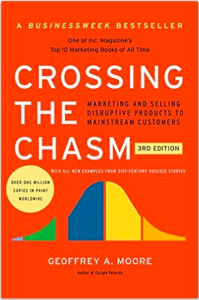
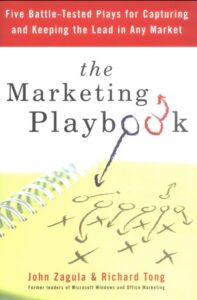
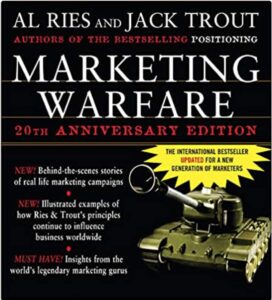
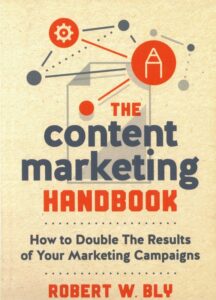
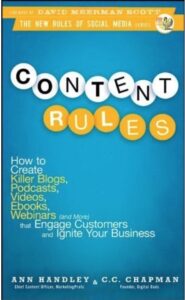
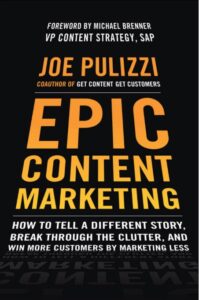
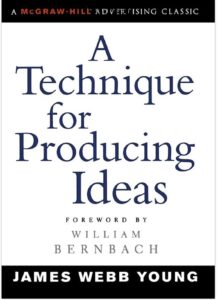
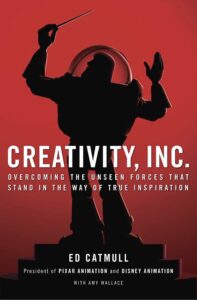
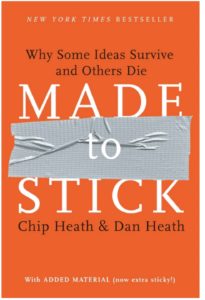
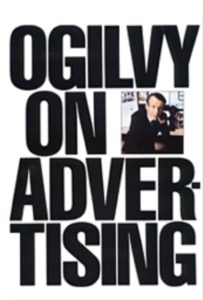
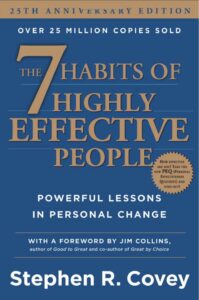
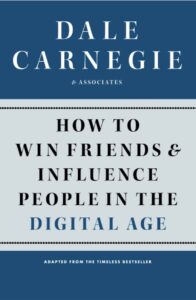
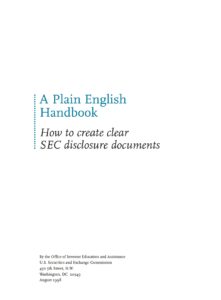
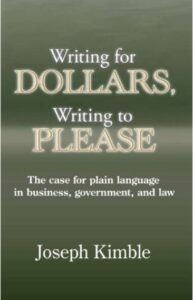

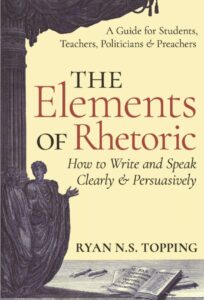
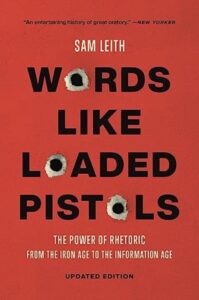
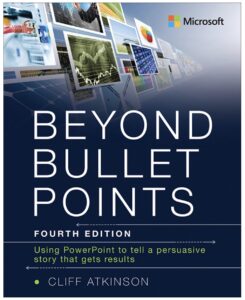
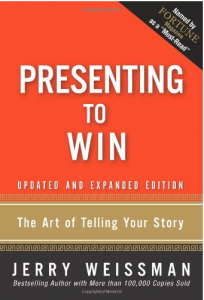
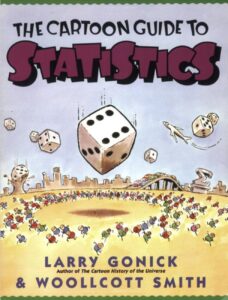
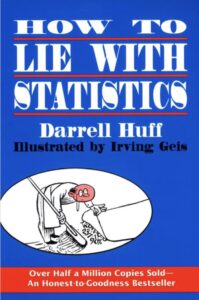

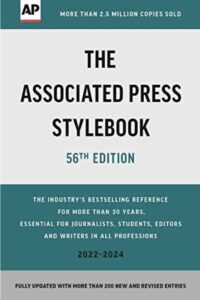
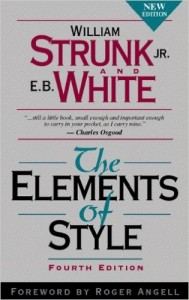
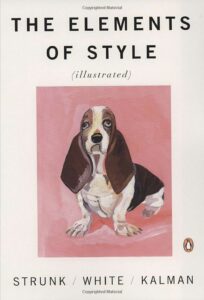
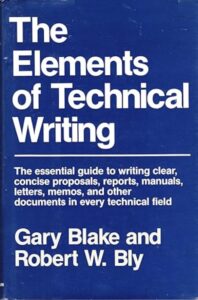
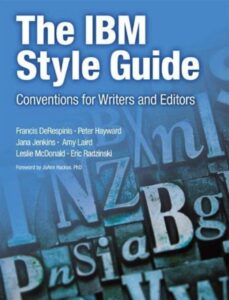
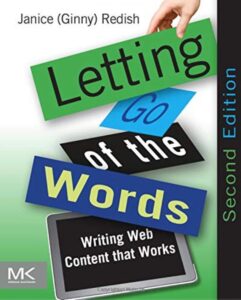
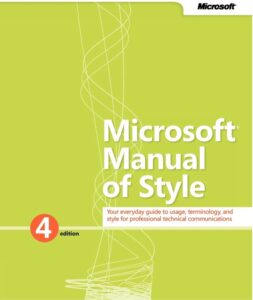
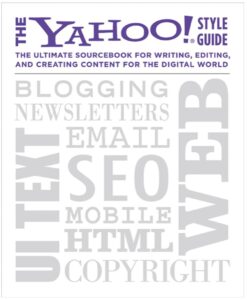

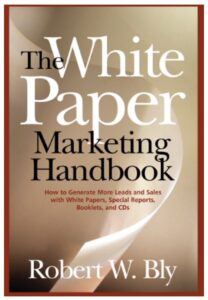
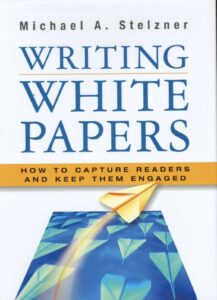
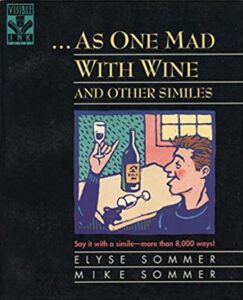
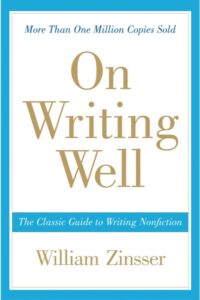
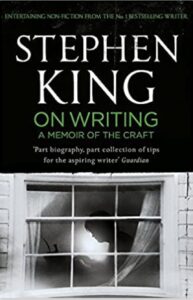
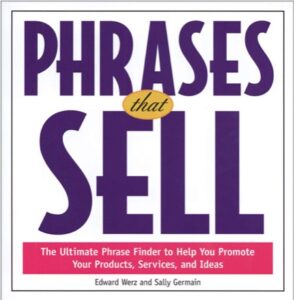
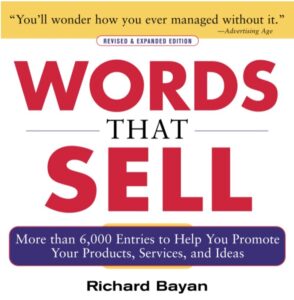
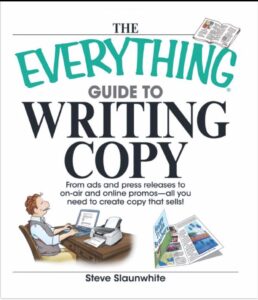
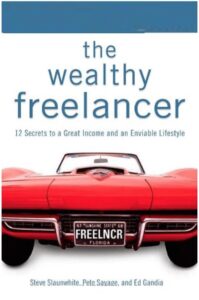
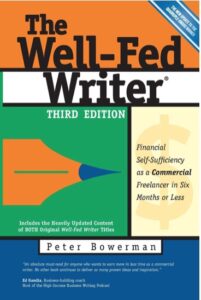



Thank you so much sir for creating such a platform to know about white papers.This will help us who want to be a white paper writer a lot…
very useful round up, and your other content is great too (I’m about to write my first whitepaper)